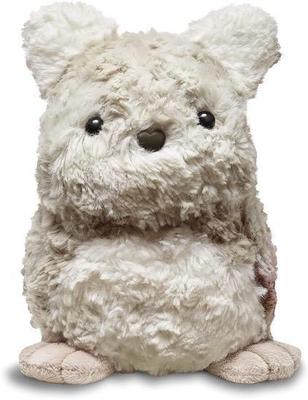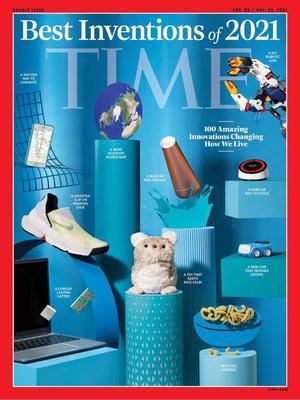Emotion regulation in children
Intervening where and when help is needed: how Dr Petr Slovak and his team have helped design a best-selling, research-backed smart toy that helps children regulate their emotions – and lets parents breathe a sigh of relief
Introduction
Being able to manage one’s emotions is an essential life skill that needs to be acquired at an early stage: kids who don’t learn to regulate difficult feelings effectively (but cope by resorting to, for instance, avoidance or suppression), are considerably more likely to perform less well at school and may suffer from mental health problems in their adult lives. Early intervention is key to support kids as well as their parents in this complex and challenging developmental task.
However, doing so is an uphill and cost-intensive struggle. In the UK alone, the Mental Health Policy Commission estimates that nearly 25,000 extra staff and additional funding in the region of almost £2bn would be required to meet children’s growing demand for mental health services. Public finances everywhere are stretched in a post-pandemic world and households face a spiralling cost of living crisis, which makes it hard to see how such a funding boost could be achieved. It may be smarter, quicker, and more effective to turn to smart technologies to provide the kinds of psychological interventions that struggling kids and desperate parents require.
Background: assisting parents with supportive in-situ technologies
The sheer scale of the problem had motivated Dr Petr Slovak, UKRI Future Leaders Fellow and Lecturer at KCL Informatics, to look for a scalable solution. ‘I always felt that there is a big potential in combining user-centred design approaches from Human-Computer Interaction with the in-depth understanding of intervention mechanisms in clinical psych, but that this has yet to be fully unpacked’, he explains. The vast potential of technology to not replace but broadly support parental and expert input in this space has not yet been realized, Dr Slovak and his team argue in a forthcoming series of research papers.
Traditional intervention programmes, for instance where parents attend educational or training classes, assume that learning outside the home can be easily transferred into better practice at home. Parents would learn conceptually to support their children’s efforts in emotion regulation in more wholesome ways, and then implement behavioural changes. But oftentimes it wouldn’t quite work like that, the literature suggests. The transmission from learning to action is hard. What’s more, many poorer households simply don’t have access to in-person delivery programmes that their children need. ‘What we know from the literature is that getting parents engaged is really hard, as everyone is just so, so busy — even if childcare and travel is paid for, it is still very difficult to reach and keep those who need it most’, Dr Slovak sums up the problem.
Targeted in situ intervention where children get support when and where they need it, is a promising new line of designing novel intervention formats. Smart technologies, such as responsive smart toys, may help children considerably in their journey to resolve intense and distressing periods of emotional overload. ‘What’s really been missing so far was an opportunity to support the child—and their parent—directly at the times when the child is angry, scared, or anxious. The smart toys we’ve designed are a first proof-of-concept of how such situated interventions could look like’, he continues. As children are likely to carry smart toys with them, they can intervene where every-day lived experience unfolds. The idea is to design new technology-driven models of intervention that are firmly embedded in people’s lives.
What exactly did the team do?
The team had built a prototype that, in collaboration with the charity Committee for Children and Sproutel, has been developed into a commercially successful product named ‘Purrble’. Purrble extends the core functionality from earlier HCI research the team conducted. The idea behind Purrble was to design a fluffy soft toy that is sufficiently vague in identity so that it provides a broad canvas for children to project their emotions onto it. By squeezing, stroking and comforting the toy that displays episodes of distress and being anxious by showing a racing ‘heartbeat’, children assume the role of a caregiver and pacifier.
The learning experience is such that children literally have a first-hand experience of resolving a situation of emotional distress and may transfer and embed this strategy into their own coping behaviours. ‘The interaction design for Purrble is deeply grounded in fundamental psychology of emotion regulation, tapping into several mechanisms that are known to help people down-regulate: starting from shifting of attention (to the toy rather than own problems), grounding one’s focus to here-and-now (onto the subtle haptic feedback from the toy), and shifting towards a ‘caregiver’ perspective (which itself is known to help emotion regulation)’, Dr Slovak points out. The design of the prototype had gone through several iterations that involved significant user testing with children and their families. In a series of workshops, children would provide feedback to design ideas and mock-ups. In a later stage, children deployed the prototype at home. The results were most encouraging.

The impact so far
Purrble has proved to be a purrfect companion. To this day, Sproutel has sold more than 15,000 units of Purrble on Amazon. In many interviews with parents, Dr Slovak and his team have found that the toy naturally facilitates parent-child interaction around emotion and the socialisation thereof. Parents, and children, consider the toy a great tool to down-regulate intense experiences of overwhelming feelings and note the calming and soothing effect the toy provides.
Since the launch, Dr Slovak and his team have received worldwide media attention. The smart toy they developed even featured on the cover of Time Magazine in 2021. Over the past couple of months, the team has been busy putting together a series of journal articles that present research to corroborate earlier findings about the toy’s significant impact on in-situ mental health intervention in children.
Looking ahead
In their line of testing empirically the efficacy of the new toy, Dr Slovak and his team have noticed that it is becoming popular with adolescents too. In the months to come, the team is going to explore further the potential benefits of the smart toy for mental health interventions for adolescents who suffer from depression or suicidal thoughts. To this end, the team has received significant funding as part of a major £4m UK Medical Research Council’s Programme Grant on Adolescent Mental Health. Across this and a range of other projects—such as a collaboration with Prof James Gross at Stanford University and Prof Jessica Schleider at Stony Brook—the team is investigating how the effects of Purrble can be further enhanced with additional cognitive interventions, thus fully combining the benefits of in-the-moment support with careful and evidence-based psychological interventions.
This story was written by Juljan Krause, a professional science writer and final-year PhD Researcher in quantum communication.
